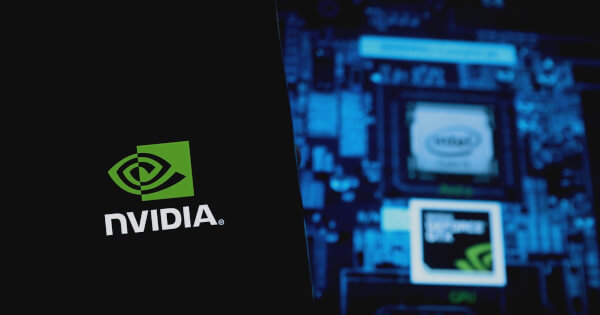NVIDIA has introduced a groundbreaking approach to deploying low-rank adaptation (LoRA) adapters, enhancing the customization and performance of large language models (LLMs), according to NVIDIA Technical Blog.
Understanding LoRA
LoRA is a technique that allows fine-tuning of LLMs by updating a small subset of parameters. This method is based on the observation that LLMs are overparameterized, and the changes needed for fine-tuning are confined to a lower-dimensional subspace. By injecting two smaller trainable matrices (A and B) into the model, LoRA enables efficient parameter tuning. This approach significantly reduces the number of trainable parameters, making the process computationally and memory efficient.
Deployment Options for LoRA-Tuned Models
Option 1: Merging the LoRA Adapter
One method involves merging the additional LoRA weights with the pretrained model, creating a customized variant. While this approach avoids additional inference latency, it lacks flexibility and is only recommended for single-task deployments.
Option 2: Dynamically Loading the LoRA Adapter
In this method, LoRA adapters are kept separate from the base model. At inference, the runtime dynamically loads the adapter weights based on incoming requests. This enables flexibility and efficient use of compute resources, supporting multiple tasks concurrently. Enterprises can benefit from this approach for applications like personalized models, A/B testing, and multi-use case deployments.
Heterogeneous, Multiple LoRA Deployment with NVIDIA NIM
NVIDIA NIM enables dynamic loading of LoRA adapters, allowing for mixed-batch inference requests. Each inference microservice is associated with a single foundation model, which can be customized with various LoRA adapters. These adapters are stored and dynamically retrieved based on the specific needs of incoming requests.
The architecture supports efficient handling of mixed batches by utilizing specialized GPU kernels and techniques like NVIDIA CUTLASS to improve GPU utilization and performance. This ensures that multiple custom models can be served simultaneously without significant overhead.
Performance Benchmarking
Benchmarking the performance of multi-LoRA deployments involves several considerations, including the choice of base model, adapter sizes, and test parameters like output length control and system load. Tools like GenAI-Perf can be used to evaluate key metrics such as latency and throughput, providing insights into the efficiency of the deployment.
Future Enhancements
NVIDIA is exploring new techniques to further enhance LoRA’s efficiency and accuracy. For instance, Tied-LoRA aims to reduce the number of trainable parameters by sharing low-rank matrices between layers. Another technique, DoRA, bridges the performance gap between fully fine-tuned models and LoRA tuning by decomposing pretrained weights into magnitude and direction components.
Conclusion
NVIDIA NIM offers a robust solution for deploying and scaling multiple LoRA adapters, starting with support for Meta Llama 3 8B and 70B models, and LoRA adapters in both NVIDIA NeMo and Hugging Face formats. For those interested in getting started, NVIDIA provides comprehensive documentation and tutorials.
Image source: Shutterstock
. . .
Tags
Credit: Source link






















 Bitcoin
Bitcoin  Ethereum
Ethereum  XRP
XRP  Tether
Tether  Solana
Solana  USDC
USDC  Dogecoin
Dogecoin  Cardano
Cardano  Lido Staked Ether
Lido Staked Ether  TRON
TRON  Wrapped Bitcoin
Wrapped Bitcoin  Wrapped stETH
Wrapped stETH  Chainlink
Chainlink  Avalanche
Avalanche  Sui
Sui  Stellar
Stellar  Litecoin
Litecoin  Toncoin
Toncoin  Shiba Inu
Shiba Inu  Hedera
Hedera  LEO Token
LEO Token  USDS
USDS  Hyperliquid
Hyperliquid  Polkadot
Polkadot  WETH
WETH  MANTRA
MANTRA  Bitcoin Cash
Bitcoin Cash  Ethena USDe
Ethena USDe  Bitget Token
Bitget Token  Wrapped eETH
Wrapped eETH  Uniswap
Uniswap  Monero
Monero  NEAR Protocol
NEAR Protocol  Pepe
Pepe  WhiteBIT Coin
WhiteBIT Coin  Aave
Aave  Bittensor
Bittensor  Ondo
Ondo  Aptos
Aptos  Internet Computer
Internet Computer  Dai
Dai  Official Trump
Official Trump  Ethereum Classic
Ethereum Classic  Mantle
Mantle  Tokenize Xchange
Tokenize Xchange  OKB
OKB  Gate
Gate  sUSDS
sUSDS  Coinbase Wrapped BTC
Coinbase Wrapped BTC 
